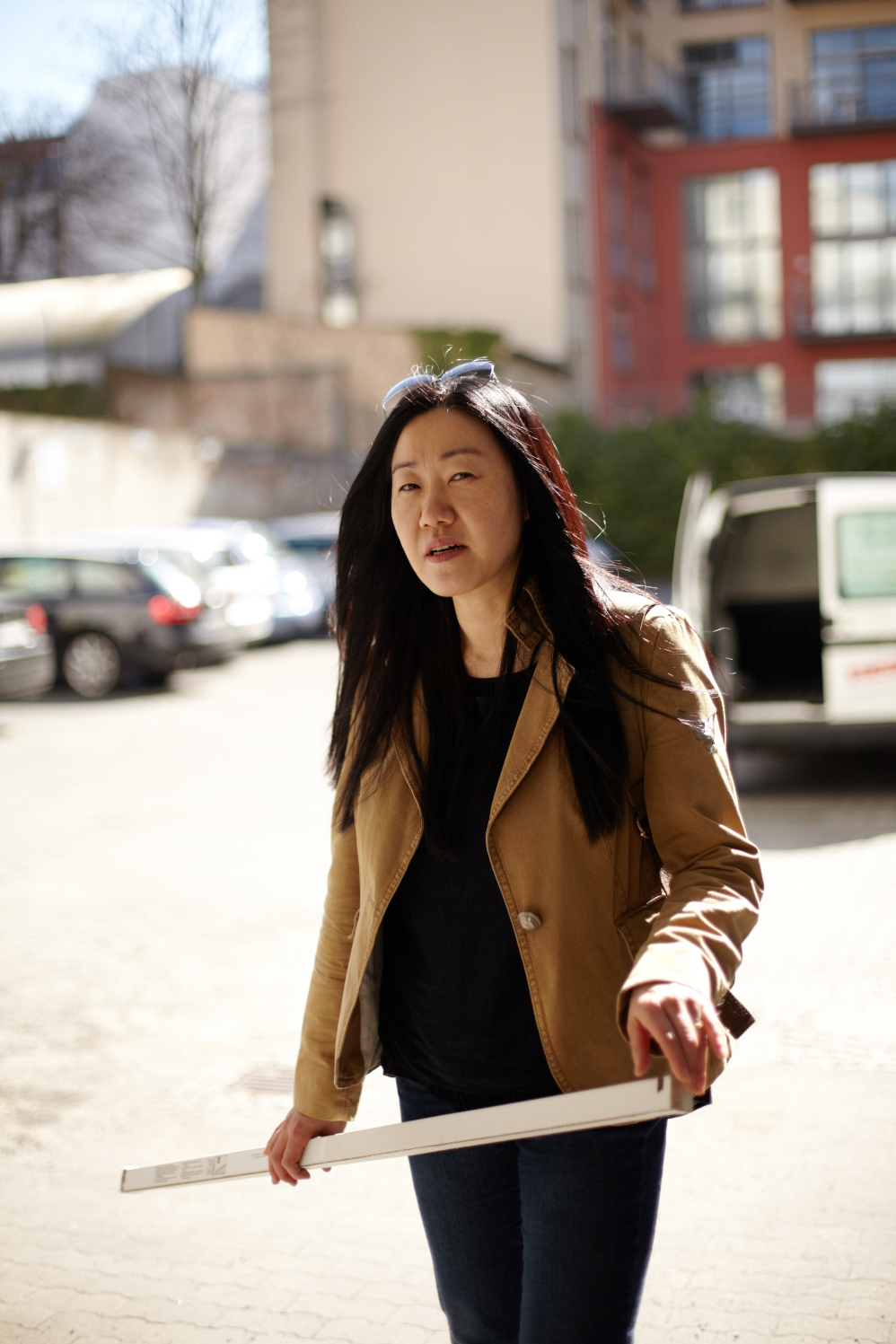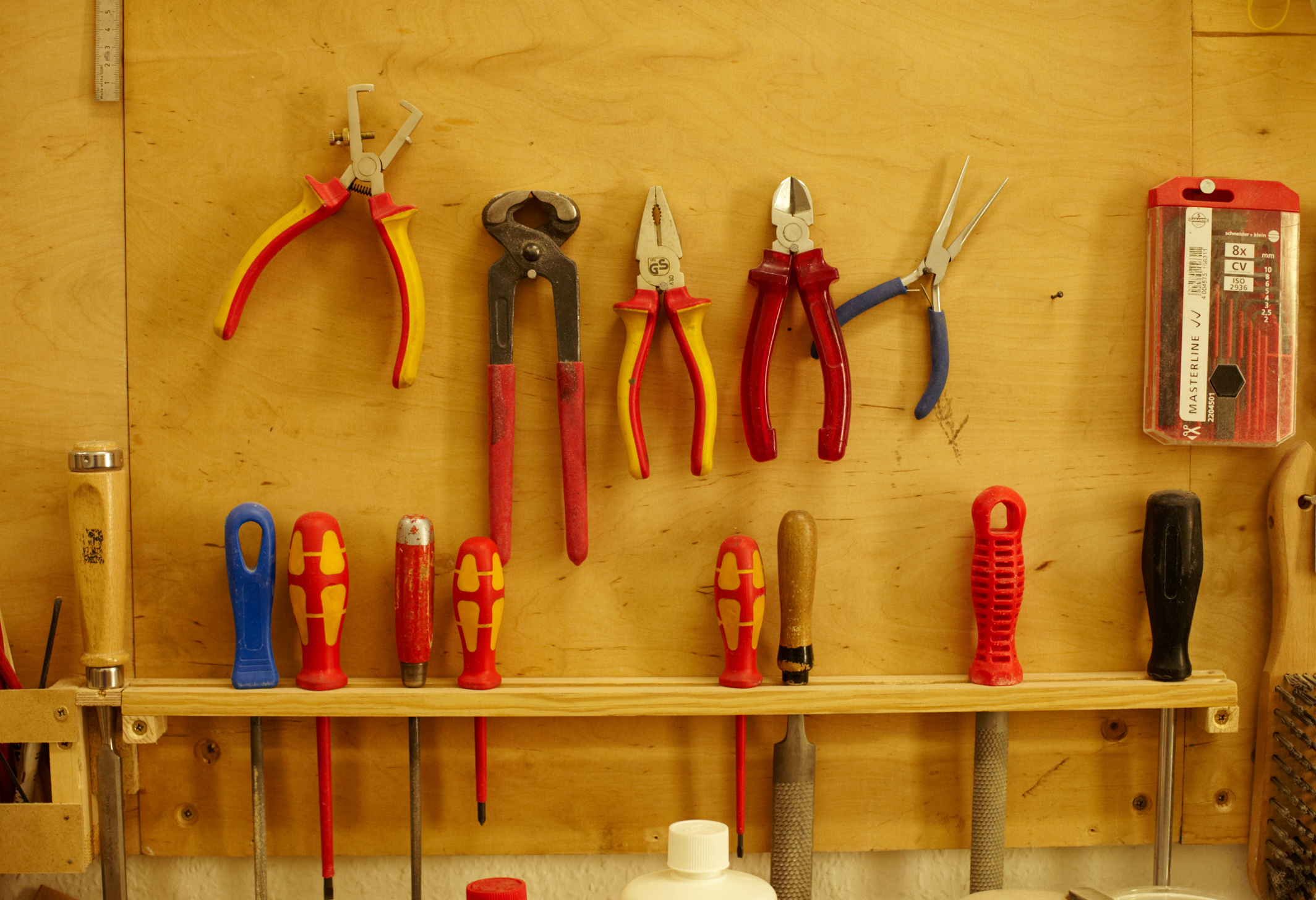”The virtual space is not existing for me, my art is analog“ – this is a very clear statement for someone who’s art is always being referred to as a translation from virtual aesthetic to an analog space. But Jeongmoon Choi is fighting against that and emphasizing the core of her work: space.
Growing up in Seoul, Jeongmoon learned to deal with limited space in a playful way while thinking about its presentation as a way to define social relations. The dream of the South Korean artist back then, which was to wander around her drawings, has come true. Her installations made out of strings create another world that enables the spectator to have a whole new experience of space; almost like an invitation to meditate. What is really special about Jeongmoon’s work is the relation between material and effect, which is also proven in her current work “Drawing in Space“. Jeongmoon gets her inspiration from the constant transformation of her urban environment. But this doesn’t necessarily always lead to something positive. She has witnessed a myriad of changes in Berlin, where she has lived for over ten years now. Unfortunately, Jeongmoon’s atelier in Prenzlauer Berg, a mix of laboratory and workshop will soon fall prey to the redevelopment wave.
We met Jeongmoon during the preparation for her current exhibition, which is part of Olympus OM-D: Photography Playground in Berlin and accompanied her on her way between studio and Opernwerkstätten – a journey between reality and dream world.




























You studied visual arts in Seoul. Why did you decide to study the same again at the art academy in Kassel?
Well, it is true that I studied visual arts in Seoul as well as in Kassel, but both courses are totally different. In Seoul I also studied classical painting in oil. I was very unsatisfied with it even tough I exhibited during that time. I wanted to experience something new so I had to go abroad. Then I was wondering where to and decided for Germany quite promptly as German painters were really popular and respected at that time. And then of course I ended up doing totally different stuff in Kassel.
When did you start studying in Kassel?
Let me think, it was in 1996. The art academy in Kassel was well-known for its conceptional approach at that time …
Right, we had a lot of possibilities and could give a lot of things a try. It was extremely important for me to work with different media and material. Only through that I found out what I am interested in and what I am really good at.
So it was a whole new area of study for you?
To a certain extent yes. But I don’t think that I changed the basic idea of my work, that developed slowly over time.
When did you move to Berlin?
Straight after my studies in 2001 as I realized quite soon that Kassel – apart from the art academy – didn’t offer a lot. When I was still in Seoul I always thought that the city would offer a lot due to the Documenta, but I learned my lesson (laughs).
So my aim was to move to Berlin as soon as possible. I was born in Seoul and grew up there so I really had to live in a big city again. The fact that the city offers a range of architecture and transforming processes is also very important for my work. In these terms Berlin offers a lot of course.
Where do you take friends when they visit you in Berlin?
I think it’s great to see all sights with public transport. Therefore I took a lot of my Korean friends on tours with the buses number 100 and 200 here in Berlin.
Are there any places in the city where you always return to?
Difficult to say, but maybe Mauerpark is such a place. I am living right next to it and the feeling to sit around the open green surrounded by houses is interesting. The houses are constantly changing due to the restorations and I love free spaces.
If you are not allowed to work one day a week, what would you do then?
Have really nice and relaxed phone calls with my family and friends in Korea and cook something amazing.
Which are your three favorite Korean restaurants in Berlin?
Kimchi Princess, Kochu Karu and Ky – these are definitely the places, I hang around most and also feel most comfortable at.
What do you do to gain new inspiration?
I go for a walk and listen to music. At the moment I love to observe architecture and to take a lot of pictures as well.
Did you ever have a plan B or did you always know that you want to do art?
Somehow it was always obvious for me. It’s hard to say why. When I was a child, my Mum and my teachers always told me that, then I followed that path and had a lot of fun doing it. So that after a while I was not questioning it any more.
What is the central theme in your work?
My central theme is that I am working with natural material on the one hand and that I deal with space and architecture on the other hand. Also my paintings contained these two aspects, they were large-sized and took up a lot of space.
Was it a big change for you from the classical more strict education to the freethinking, „anything goes“ approach in Kassel?
Not really, I was really happy with it. The only thing I was astonished about was how little manual knowledge the other students had. But on the other hand I also saw what a big creative potential they had. I was really impressed by that as this aspect was the one I was lacking the most.
Are you using digital media for your work?
Yes and no. For most of my work I don’t need them. Sometimes I use computer programs for the conception and digital cameras for support and documentation.
Nevertheless a lot of your work is evocative of virtual space and seem like a translation in the analog world?
You can see it like that. But actually only my black light works, are – due to their composition – evocative of models created by the computer. But these did not derive from virtual concepts, they are rather independent space drawings, which develop mainly through my own inspiration.
How important is this meditation aspect for you?
I don’t have to meditate myself, as spanning strings in a room is such a reductive and calm work, which is so repetitive as well that it kind of feels like a meditation itself. A lot of times curators or contemplators tell me how meditative my work is.
The reaction is always the same in the first place: people don’t understand why lines are glowing and think it is a laser or something similar. Then they touch the strings and realize: ‘Oh that is materiality’. They start walking carefully in the room and forget about it as they are only concentrating on the lines. That is a very beautiful reaction for me. I love to talk to the audience. I think every artists lives in a way from these reactions.
Is there a particular space which you would love to modulate?
Actually I think almost everything is interesting: from White Cube, where there are no limitations at all, to preprinted spaces, like the current installation at Opernwerkstätten. The space has a very strong character, which I can use for my work.
How did you come up with the idea of the current sculpture at Opernwerkstätten?
First I got inspired by space and had to select one for the installation. For that I chose a room, which allows a lot of movement and perspectives. I liked the space as it seems that he needed some change. In this case it is a quite old building, which hasn’t been used in the meantime. In addition to that, also the audience plays an important role. My work should be interactive, you should be able to take different perspectives and experience the space. Even though I am creating the whole space, I can’t touch all of it. The audience always finds new perspectives and through that is shaping it as well.
The Installation by Jeongmoon Choi can be seen at Olypmus OM-D Photography Playground until 24 May 2013 – entry is free.
Text: Antonia Märzhäuser
Translation: Katharina Finke
Photography: Debora Mittelstaedt
Video: Christian Fussenegger
Sound: Kero Lorenso
